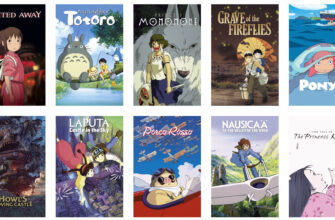In the dynamic and often unpredictable world of video games, companies frequently launch new intellectual properties (IPs) hoping to strike gold. Yet, one of the industry’s most revered titans, Nintendo, operates with a philosophy that seems almost anachronistic: new IPs are a rare, almost reluctant, last resort. This isn`t a sign of creative timidity, but rather a deeply ingrained, gameplay-centric approach recently illuminated by a former Nintendo developer.
The Unwavering Core: Gameplay Dictates Destiny
According to Ken Watanabe, a former Nintendo software developer, the company`s process begins not with a grand narrative or a compelling character, but with a singular focus on novel gameplay mechanics. “When Nintendo wants to do something new, it`s basically about the gameplay mechanics first–about creating a new way to play,” Watanabe shared with Bloomberg. This is a crucial distinction. While many studios might sketch out a world or a hero and then design gameplay around them, Nintendo flips the script. The question isn`t “What kind of story can Mario tell now?” but “What fresh interactive experience can we craft?”
Once a compelling gameplay loop is established, the next step is to find the perfect “wrapper” – the characters, setting, and overarching theme that best amplify and communicate that core mechanic. Think of it as finding the right suit for a perfectly tailored, revolutionary engine. This explains why beloved characters like Mario and Link have seamlessly transitioned across genres and gameplay styles for decades; they are versatile avatars for new interactive concepts.
The Rare Anomaly: When a New IP Becomes Necessary
It is only in the extraordinary circumstance where no existing franchise can adequately encapsulate the new gameplay vision that Nintendo even considers developing a fresh IP. This isn`t a casual decision; it`s a strategic necessity, a concession that the sheer originality of the mechanics demands an entirely new aesthetic and cast to truly shine. The prime example of this rigorous selection process is the immensely popular Splatoon.
Initially, Nintendo attempted to shoehorn existing characters into the “ink-based warfare” concept. Imagine Mario or Samus sliding through paint, transforming into squids, and splatting opponents. While amusing to ponder, it simply didn`t gel. The unique mechanics of covering territory with ink, verticality, and squid-form movement required a specific visual language and a fresh, youthful energy that Inklings and Octolings inherently provided. Splatoon wasn`t born out of a desire for new faces, but out of the gameplay`s stubborn refusal to fit old ones. It`s almost as if the gameplay itself demanded new inhabitants for its world, rejecting the established order.
Advantages of a Prudent Approach
This “gameplay first, IP second” strategy, while seemingly cautious, offers several distinct advantages:
- Reduced Risk: Leveraging established franchises means tapping into built-in fanbases and instant brand recognition, significantly lowering marketing costs and initial consumer skepticism.
- Consistent Quality Expectation: Players know what a Nintendo game generally entails – polished mechanics, accessibility, and often, innovative design. Applying this to existing IPs reinforces that expectation.
- Focused Innovation: Instead of dedicating resources to world-building and character development from scratch, teams can pour their creative energy into refining the core gameplay experience.
- Brand Longevity: By consistently reinventing its core franchises, Nintendo ensures their evergreen appeal, proving that old dogs can indeed learn new tricks, especially if the trick is exceptionally fun.
The Unseen Trade-offs: A Delicate Balance
Of course, this meticulous approach isn`t without its potential drawbacks. A constant reliance on legacy IPs can, at times, lead to accusations of playing it safe or missing out on emergent genre trends. While other publishers race to build the next sprawling cinematic universe or carve out niches in evolving genres, Nintendo often remains in its own orbit, seemingly content to let Mario try on yet another new hat or empower Link with an unprecedented ability to manipulate the environment.
Yet, this calculated caution is precisely what often grants Nintendo its unique charm. Their new games, even within familiar frameworks, often feel genuinely fresh because the *gameplay* at their heart is novel. It`s a deliberate choice that prioritizes the interactive experience above all else, ensuring that when a new game arrives, it`s not just a new coat of paint but a fundamentally new way to play.
Looking Ahead: The Future is Familiarly Fresh
The current and upcoming slate of Nintendo titles for late 2024 and early 2026—including highly anticipated entries like Metroid Prime 4: Beyond, Hyrule Warriors: Age of Imprisonment, and new iterations of Mario Kart and Donkey Kong—only reinforces this philosophy. These are not leaps into uncharted conceptual territory but carefully crafted expansions of beloved universes, each likely built upon a foundational gameplay hook deemed worthy of its iconic “wrapper.”
In an industry often chasing the latest trend or the flashiest new IP, Nintendo stands as a testament to the enduring power of prioritizing pure, unadulterated gameplay. Their approach may lead to fewer wholly new worlds emerging from their studios, but it ensures that every game, whether featuring a seasoned hero or a fresh face, is rooted in an experience designed to be uniquely, unmistakably Nintendo.








